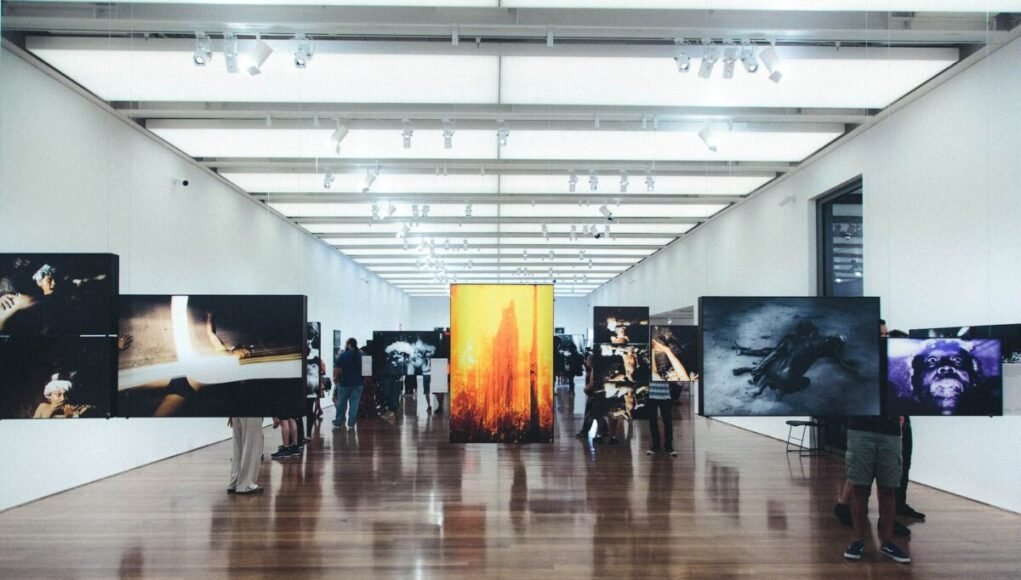The integration of art and technology, also known as arttech or arttech, has transformed the landscape of artistic creation and expression. As artists embrace new technologies and digital mediums, the possibilities for innovation seem endless. This fusion between creativity and technology continues to redefine how we experience, interact with, and understand art.
A Brief History of Art and Technology
The interplay between art and technology can be traced back to primitive tools that enabled early humans to create cave paintings and carve sculptures. As civilizations developed, technological advancements allowed artists to work with new materials and adopt innovative techniques that pushed the boundaries of their craft.
The late 19th century bore witness to a pivotal moment when technology began to dramatically disrupt established art practices. The invention of the portable camera transformed the art of painting by enabling the Impressionists to break free from the studio and capture ephemeral light effects and fleeting moments in nature. Post-Impressionists like Paul Cézanne and Vincent Van Gogh harnessed the expressive potential of color and brushwork in their arttech explorations.
In the early 20th century, avant-garde art movements like Cubism and Futurism directly responded to technological developments and the machine age. The Cubists fragmented forms and depicted subjects from multiple perspectives simultaneously, influenced by innovations like x-rays and cinema. The Futurists attempted to capture dynamism, speed, and motion in their arttech works as expressions of technological progress.
As photography and film gained prominence, pioneers like Man Ray took arttech in new directions through experimental photography and films. Others like Naum Gabo used materials like plastic and metal to create technologically-informed sculptural forms.
The Rise of Digital Art and New Media Art
The late 20th century witnessed the emergence of new arttech forms like digital art and new media art. Digital art encompasses artworks created using digital technology, including digital painting, algorithmic art, computer animation, and more. It marked a radical departure from traditional art materials.
New media art describes artforms that utilize new media technologies such as film, video, performance, immersive environments, and digital interactivity. Video art pioneers like Nam June Paik and Bill Viola manipulated the technology of television and film to create avant-garde works.
Today, artists utilize artificial intelligence, data visualization, virtual reality (VR), and augmented reality (AR) to create interactive and generative arttech works. As technology continues to evolve, it spawns innovative new means of artistic production and experience.
Technology-Driven Art Forms
Several new technology-driven art forms have gained prominence due to the expanded creative possibilities enabled by digital technology and computing. These arttech forms leverage algorithms, code, and digital processes to generate unique and often interactive artworks.
Generative Art
Generative art utilizes algorithms and autonomous systems to produce outputs that are unique and unpredictable. The artist creates a system with specific parameters, but the final visual output is generated by the machine. Generative art allows for endless variation and can continuously create new artifacts without human intervention.
Algorithmic Art
Closely related to generative art, algorithmic art relies on computer algorithms to generate compositions according to programmed rules. The artist provides the algorithm, which acts as the creative blueprint, but the algorithm manifests the final work based on its calculations. Algorithmic art produces elaborate designs, patterns, and aesthetically pleasing visual arrangements.
Interactive Art
Interactive art incorporates technology to respond to actions performed by viewers, participants, or the surrounding environment. Through movement sensors, webcams, touch screens, and other input devices, the art piece reacts to the inputs in real-time. This creates a two-way exchange that allows the audience to engage directly with the work.
Immersive Art Experiences
Artists today are leveraging new technologies like virtual reality (VR), augmented reality (AR), and projection mapping to transport viewers into fully immersive environments and transcendental experiences. These technologies blur the boundary between art and reality.
Virtual Reality Art
VR technology allows artists to create fully three-dimensional worlds that viewers can explore by wearing VR headsets. The visuals respond in real-time based on the viewer's movements, creating an immersive virtual art experience. Museums have adopted VR to provide access to rare collections or augment physical exhibitions.
Augmented Reality Art
Unlike VR, which creates a virtual world, AR overlays digital elements onto real environments. Viewers use smartphones or AR glasses to see virtual artworks positioned in physical locations, fusing digital and physical realities. Artists use AR for site-specific installations that interact with public spaces or architecture.
Projection Mapping
Projection mapping utilizes specialized projections to transform surfaces like buildings into dynamic displays. Artists use projection mapping on architectural facades, interiors, or outdoor landscapes as canvases for their arttech creations. This technology turns physical environments into visually striking, interactive art installations.
The Impact of Art and Technology on Society
Beyond expanding artistic possibilities, the intersection between art and technology has profound societal and cultural implications. Experimental arttech pushes boundaries, challenges preconceived notions, and inspires new ways of understanding the world around us.
Immersive and interactive art can promote empathy, dialogue, and human connection by engaging audiences both intellectually and emotionally. Artists also utilize arttech to raise awareness about social, environmental, and political issues in compelling ways.
Art and technology will continue to transform how we experience art while providing artists with groundbreaking new tools for imagination. As artists and technologists collaborate, they shape the future of cultural expression and collective consciousness. The possibilities arttech presents for creativity, communication, and social change are boundless.
The Future of Art and Technology
The landscape of art and technology is constantly evolving as new innovations emerge. We are likely to see artificial intelligence and machine learning play a greater role in generative art and algorithmic creative processes. Artists may increasingly incorporate biotechnology, quantum computing, and other scientific advances into their explorations.
Virtual, augmented, and mixed reality will unlock more immersive environments and experiences that could transform museums, galleries, and art exhibitions. Artists will dream up new ways for audiences to interact with and participate in their arttech works.
As science and technology continue to progress, so too will radical new directions in arttech. However, human creativity, imagination, and emotional resonance will remain at the core. The fusion of art and technology begets boundless creativity and expanded possibilities to experience and understand the world around us.
































